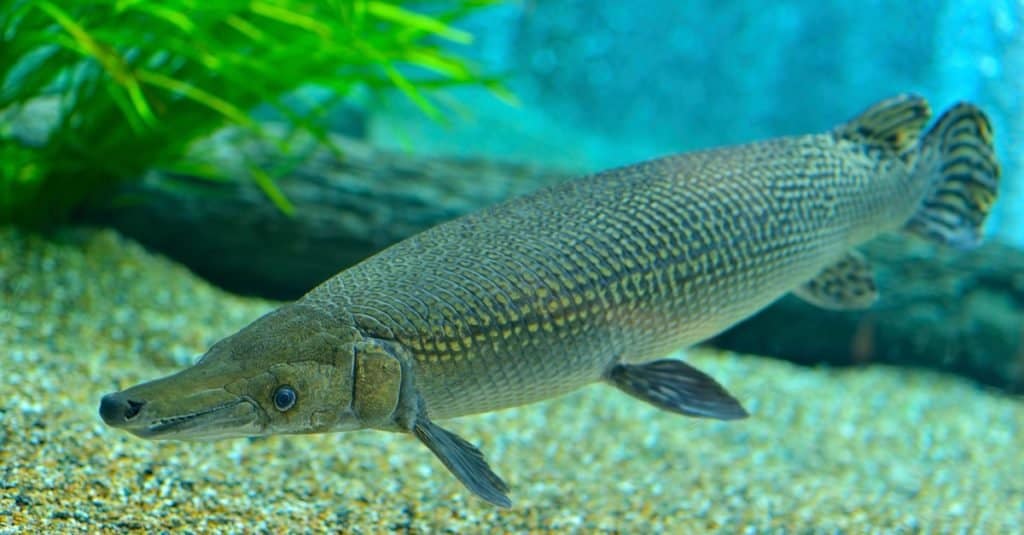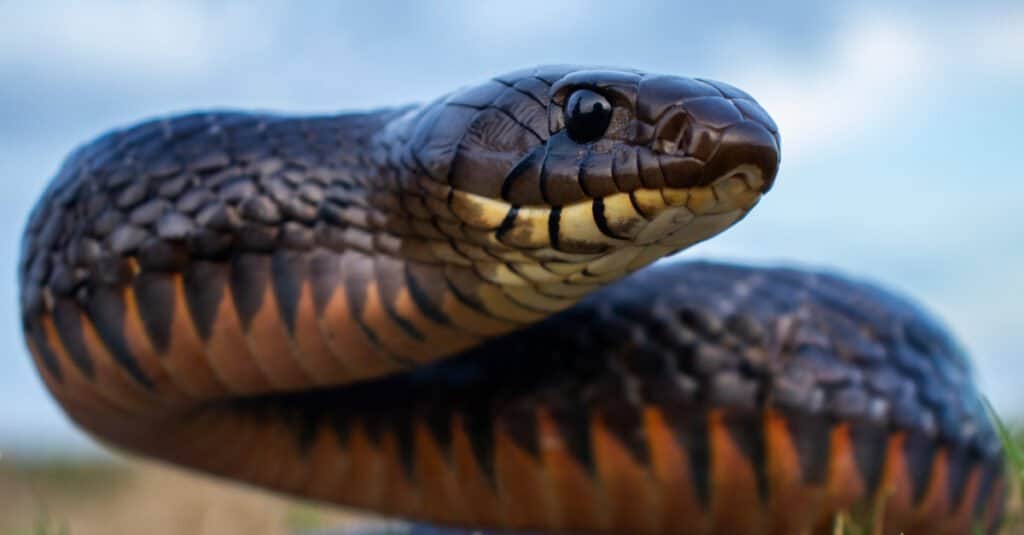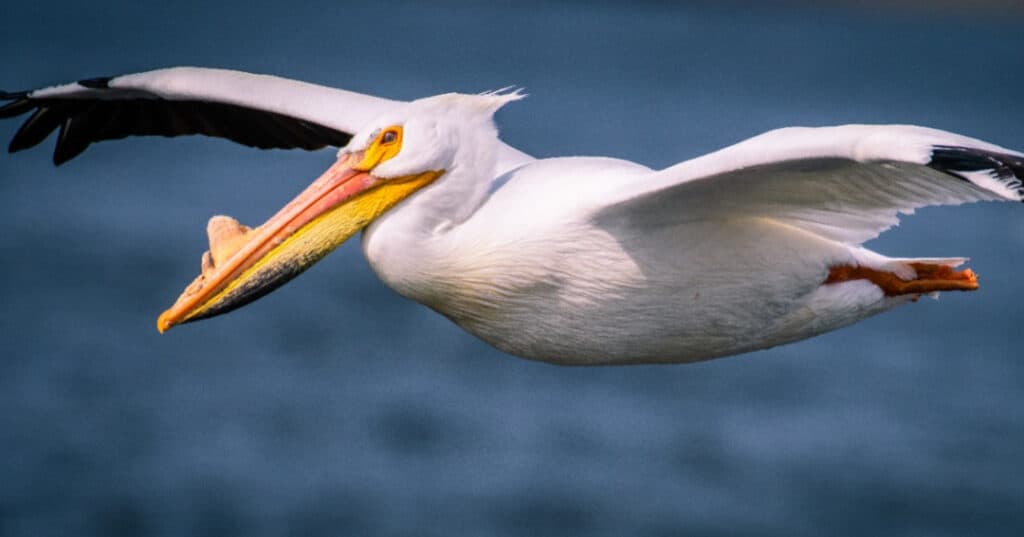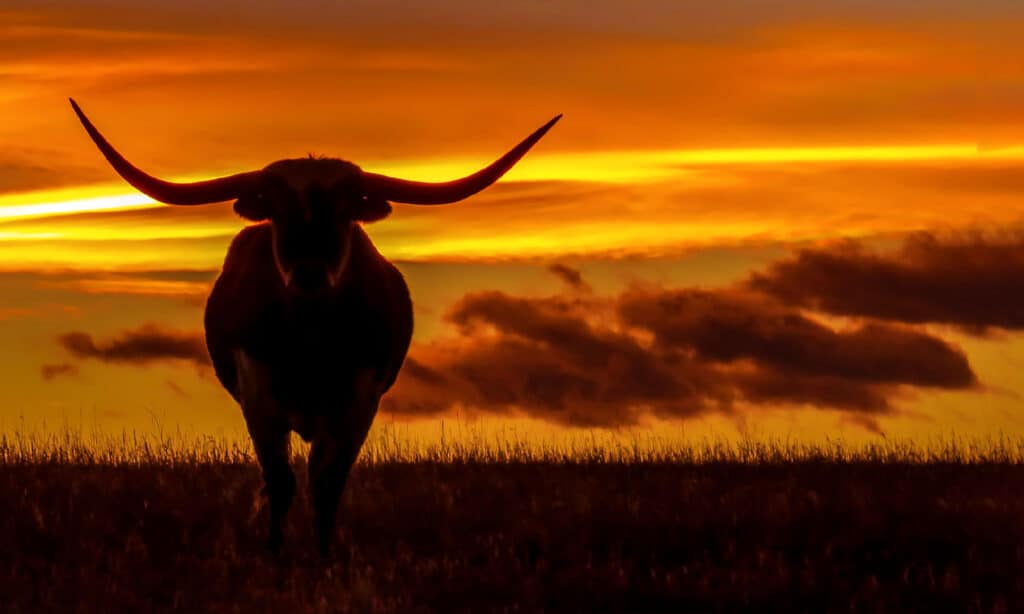Land animals never make the list of biggest in the world because sea creatures always win the contest. However, the Lone Star State has a few amazing creatures. We dug through our resources to find what we believe are the largest animals in Texas.
This state is second only to Alaska in square miles and is known for the wide range of wildlife that calls Texas home. A favorite saying is “everything’s bigger in Texas,” and for some animals, that certainly seems to be true.
Key Points
- The largest animal in Texas is the Texas longhorn.
- Alligator gar are living fossils, common in many lakes and rivers in the south.
- Giant green darners are the biggest dragonfly species in North America.
- Texas indigo snakes are also called rancher’s friends because they eat venomous snakes.
Largest Fish: Alligator Gar (Atractosteus spatula)

tristan tan/Shutterstock.com
The alligator gar is the largest fish in the Texas river system and the largest member of the gar family. This giant fish reaches up to six feet in length and can weigh over 300 pounds, although it’s surprisingly passive and sluggish, given its frightening appearance.
The record-holding alligator gar was accidentally caught in a net by a fisher in Vicksburg, Mississippi, and measured over eight feet long. According to officials, it was probably 50 to 70 years old, although one report said it could be 95 or more.
This torpedo-shaped fish is native to many rivers and lakes in the southern United States. It’s a living fossil with a swim bladder lung that helps supplement its gills. It allows them to breathe air, which is why they’re also found in waters that would kill other fish through suffocation.
Largest Snake: Texas Indigo Snake (Drymarchon melanurus erebennus)

Radiant Reptilia/Shutterstock.com
The prize for the largest snake in Texas goes to the Texas indigo snake for its impressive length.
Texas indigo snakes are common in south Texas and northern Mexico. The farmers and ranchers love them because of what they eat. This species is part of a family of nonvenomous colubrids that help keep the venomous snake population in check. Their genus name of Drymarchon means “Lord of the Forest,” and the name fits.
The Texas indigo snake can measure over eight feet long. They’re known rattlesnake eaters and even seem to be somewhat immune to rattlesnake venom. Texas indigo snakes appear in many Youtube videos in a death match with rattlers, often winning the fight, even after several bites from the rattler.
Largest Bird: American White Pelican

Jerek Vaughn/Shutterstock.com
Texas is home to an impressive number of birds. The state is home to thousands of wildlife species — you’ll find more than 650 species in the Lone Star State. The American white pelican’s bright white plumage and black flight feathers are visible from a distance. The American White pelican boasts a wingspan that reaches 9 feet and weighs up to 30 pounds, making it the largest bird in Texas.
You’ll only find American white pelicans away from water during their migration. These distinctive birds spend winters in Texas, then migrate north again to breeding grounds in the western United States and Canada.
These aquatic birds spend most of their time either in or near bodies of water like marshes, lakes, and rivers. They primarily eat fish they catch using their pouches to skim the water’s surface. However, like many predators, they are opportunistic and also eat crayfish and salamanders.
Largest Mammal: Longhorn Cattle

iStock.com/DawnKey
The Texas longhorn cattle is the winner for the largest mammal, and indeed the largest animal in Texas. It also happens to be the state mammal. These bovine behemoths weigh up to 1,500 pounds and stand five feet tall at the shoulder. Their horns are massive and can measure up to 11 feet from tip to tip.
Longhorn cattle are the descendants of cattle that Spanish Explorers brought with them in the late 1400’s. A few were left behind and became feral. Then, in the 1500’s, the Spaniards brought more cattle with them to Mexico for food. Those interbred with the native Criollo cattle, and as they moved further north, some wandered off and joined the feral population.
Over the centuries, the cattle became outrageously tough, weathering freezing temperatures as well as blazing hot. During some of the most vicious weather Texas can dish out, longhorns survive conditions that our meat cattle breeds can’t.
They’re also extremely protective of their herd. Where many animals take off when a threat approaches, these cattle are known for standing their ground. You’re used to seeing mother animals protect their young, but in this case, if you mess with a baby, you get to tangle with the entire herd.
By the late 1920s, longhorn cattle were almost extinct because consumers prized the tallow that the European breeds provided. They would have disappeared completely if it weren’t for the efforts of a group of conservationists from the U.S. Forest Service who came together to preserve the breed.
Largest Flying Insect: Giant Green Darner (Anax walsinghami)

https://ift.tt/4ybdcBm – License
In a state with over 30,000 insect and arachnid species, it’s easy to get lost in the numbers. If you’re not a particular fan of insects, you may see them as all pretty much the same: creepy, crawly, and disgusting. However, there are a couple of notable insects that are, dare we say, pretty! The giant green darner wins for largest flying insect in Texas. The best part? They eat mosquitoes and other pesky bugs.
The giant green darner is a blue-green iridescent beauty that ranges from Texas to California and north to Nevada and Utah. According to BugGuide.net, it’s a huge dragonfly that can reach 4.6 inches long, from its eyes to the end of its abdomen. However, other sources say that it can reach five inches in length. They inhabit areas around ponds, marshes, and lakes.
Up Next
- 96 Snakes Found In Texas (14 Are Venomous!)
- Discover the 7 largest animals in Yellowstone Park.
- The 10 Largest Animals in Minnesota, and Where You’ll Find Them
The post Discover The 5 Largest Animals In Texas, and Where You’ll Find Them appeared first on AZ Animals.
from Animal News, Facts, Rankings, and More! - AZ Animals https://ift.tt/0SdsJHw